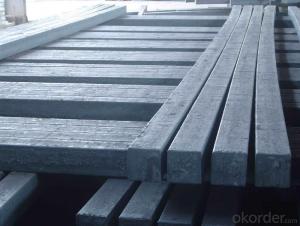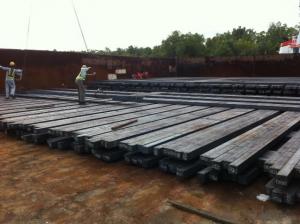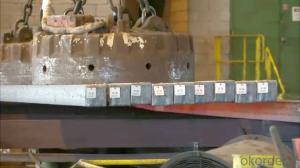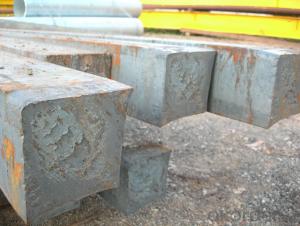Z42 BMP Rolled Steel Coil Construction Roofing Construction
- Loading Port:
- Tianjin
- Payment Terms:
- TT OR LC
- Min Order Qty:
- 100 m.t.
- Supply Capability:
- 10000 m.t./month
OKorder Service Pledge
OKorder Financial Service
You Might Also Like
Structure of Z42 BMP Rolled Steel Coil Construction Roofing Construction 
Description of Z42 BMP Rolled Steel Coil Construction Roofing Construction
PPGI is made by cold rolled steel sheet and galvanized steel sheets as baseplate, through the surface pretreatment (degreasing, cleaning, chemical conversion processing), coated by the method of continuous coatings (roller coating method),
and after roasting and cooling. Zinc coating: Z60, Z80, Z100, Z120, Z180, Z275, G30, G60, G90
Alu-zinc coating: AZ60, AZ80, AZ100, AZ120, AZ180, G30, G60, G90
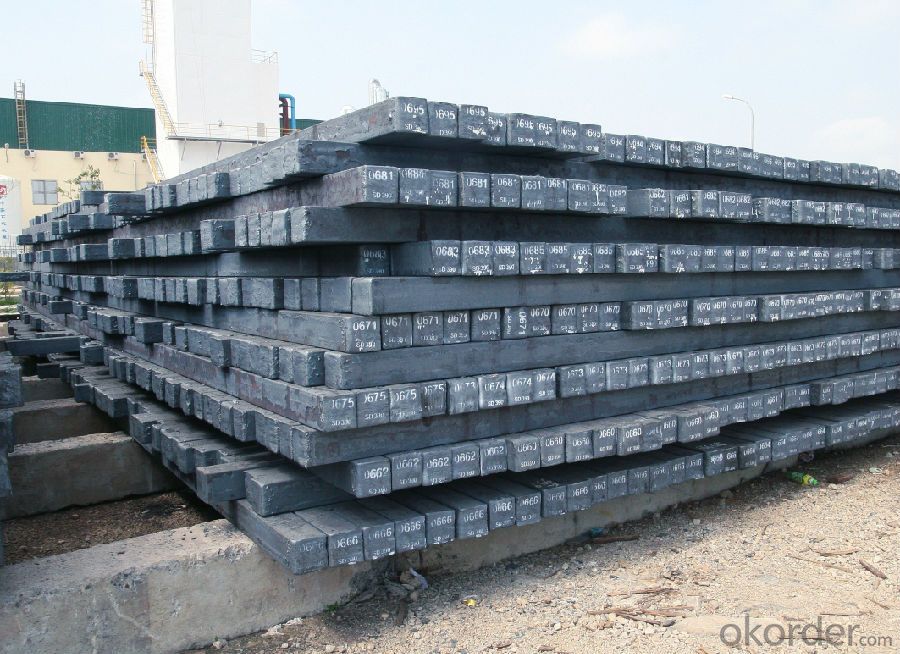
Main Feature of Z42 BMP Rolled Steel Coil Construction Roofing Construction
1) Excellent corrosion resistance: The zinc layer provides a good protection of Pre-painted Galvanizeed Steel Sheet.
2) High heat resistance: The reflective surface of the material aids in efficiently reflecting the sunlight away and in turn reducing the amount of heat transmitted. The thermal reflectivity converts into energy savings.
3) Aesthetics: Pre-Painted Galvanized steel sheet is available in plethora of patterns and multiple sizes as per the requirements that given by our customers.
4) Versatility: can be used in the various areas.Standard seaworthy export packing: 3 layers of packing, inside is kraft paper, water plastic film is in the middle and outside GI steel sheet to be covered by steel strips with lock, with inner coil sleeve.
Applications of Z42 BMP Rolled Steel Coil Construction Roofing Construction
1. Construction and building: roofing; ventilating duct; handrail; partition panel;etc.
2. Electric appliance: refrigerator; washing machine; refrigerator; DVD;etc.
3.Transportation: oil tank; road sign; etc.
4.Agriculture:barn; etc.
5.Others:vending machine; game machine; etc.  Specifications of Z42 BMP Rolled Steel Coil Construction Roofing Construction
Specifications of Z42 BMP Rolled Steel Coil Construction Roofing Construction
| Classified symbol | Yield Point Minimum N/mm2 | Tensile Strength Minimum | Elongation Minimum % | Application | ||||
| N/mm2 | Nominal Thickness mm (t) | |||||||
| JIS | Yogic | 0.25-0.4 | 0.4-0.6 | 0.6-1.0 | 1.0-1.6 | |||
| G3312 | specification | |||||||
| CGCC | CGCC | -205 | -270 | -20 | -21 | -24 | -24 | Commercial |
| CGCD | CGCD | --- | 270 | --- | 27 | 31 | 32 | Drawing |
| --- | CG340 | 245 | 340 | 20 | 20 | 20 | 20 | Structural |
| CGC400 | CG400 | 295 | 400 | 16 | 17 | 18 | 18 | Structural |
| CGC440 | CG440 | 335 | 440 | 14 | 15 | 16 | 18 | Structural |
| CGC490 | CG490 | 365 | 490 | 12 | 13 | 14 | 16 | Structural |
| CGC570 | CG570 | 560 | 570 | --- | --- | --- | --- | Structural |
| ASTM Designation | Yield Point Minimum | Tensile Strength Minimum | Elongation Minimum % | Application | Q/BQB 445-2004(China standard) | ASM A653/A653M | JISG 3312 | |
| ksi(MPa) | ksi(MPa) | TDC51D+Z | (CS TYPE A+Z) | CGCC | ||||
| A653(M)-99 CS TYPE A,B,C | --- | --- | --- | Commercial | TDC52D+Z | CGCD | ||
| A653(M)-99 FS | --- | --- | --- | Lock Forming | TS250GD+Z | (G250+Z) | - | |
| A653(M)-99 DS | --- | --- | --- | Drawing | TS300GS+Z | (G300+Z) | CGC 400 | |
| A653(M)-99 SS Grade33(230) | 33(230) | 45(310) | 20 | Structural | TS350GD+Z | (G350+Z) | CGC490 | |
| A653(M)-99 SS Grade37(255) | 37(255) | 52(360) | 18 | Structural | TS550GD+Z | (G550+Z) | CGC570 | |
| A653(M)-99 SS Grade40(275) | 40(275) | 55(380) | 16 | Structural | ||||
| A653(M)-99 SS Grade50(345) | 50(345) | 65(450) | 12 | Structural | ||||
| A653(M)-99 SS Grade80(550) | 80(550) | 82(570) | --- | Structural | ||||
FAQ of Z42 BMP Rolled Steel Coil Construction Roofing Construction
We have organized several common questions for our clients,may help you sincerely:
1. How Can I Visit There?
Our company is located in Tianjin City, China, near Beijing. You can fly to Tianjin Airport Directly. All our clients, from home or aboard, are warmly welcome to visit us!
2. How Can I Get Some Sample?
We are honored to offer you sample.
3. Why choose CNBM?
1, ISO, BV, CE, SGS approved.
2, Competitive price and quality.
3, Efficient service team online for 24 hours.
4, Smooth production ability(50000tons/month) .
5, quick delivery and standard exporting package.
6, Flexible payment with T/T, L/C, Paypal, Kunlun bank, etc .
- Q:How are steel billets used in the manufacturing of pressure vessel components?
- Steel billets are a crucial raw material in the manufacturing process of pressure vessel components. Pressure vessels are containers designed to hold gases or liquids at a significantly higher or lower pressure than the surrounding environment. These components are widely used in various industries such as oil and gas, chemical, and power generation. Steel billets, which are semi-finished products with a square or round cross-section, serve as the starting point for the production of pressure vessel components. They are typically made from carbon or alloy steel and undergo several manufacturing processes to transform them into the final product. The first step in the manufacturing process involves heating the steel billets to a specific temperature to make them more malleable. This process is known as hot working or forging. The heated billets are then subjected to pressure, either through hammering or rolling, to shape them into the desired form. This process helps to refine the structure of the steel and improve its mechanical properties. After the initial shaping process, the billets are further processed through a series of machining operations. This includes cutting, drilling, and milling to create the necessary features and dimensions required for pressure vessel components such as shells, heads, nozzles, and flanges. These machining operations ensure that the components meet the precise specifications and tolerances required for safe and efficient operation. Additionally, the steel billets may undergo heat treatment processes such as annealing, quenching, and tempering to further enhance their mechanical properties. Heat treatment helps to improve the strength, hardness, and durability of the steel, making it suitable for withstanding high pressures and corrosive environments. Once the pressure vessel components are machined and heat-treated, they undergo rigorous quality control inspections to ensure they meet the required standards and specifications. This includes non-destructive testing methods such as ultrasonic testing, radiographic testing, and liquid penetrant testing to detect any potential defects or flaws. In summary, steel billets play a crucial role in the manufacturing of pressure vessel components. They are transformed through hot working, machining, and heat treatment processes to create the final products. By using high-quality steel billets and employing stringent quality control measures, manufacturers can produce pressure vessel components that are safe, reliable, and capable of withstanding the demanding conditions they are designed for.
- Q:Are steel billets used in the production of household goods?
- No, steel billets are not typically used in the production of household goods. Steel billets are semi-finished products that are used as raw material for various industries, such as construction, automotive, and manufacturing. They are usually hot-rolled into different shapes, such as bars, rods, or sheets, which are then further processed to create the desired household goods. For household goods, manufacturers often use specific types of steel, such as stainless steel or carbon steel, that have been processed and shaped according to the particular product requirements.
- Q:What are the potential applications of steel billets in the packaging aftermarket?
- Steel billets have numerous potential applications in the packaging aftermarket due to their strength, durability, and versatility. Some of the potential applications include: 1. Metal packaging: Steel billets can be used to create metal packaging containers such as cans, drums, and barrels. These containers provide excellent protection for various products, especially those that require high strength and durability, such as hazardous materials or heavy machinery parts. 2. Pallets and crates: Steel billets can be used to manufacture sturdy pallets and crates for packaging and transporting goods. These steel-based pallets and crates offer superior load-bearing capacity and can withstand rough handling, making them ideal for heavy or fragile items that need extra protection during transit. 3. Strapping and binding: Steel billets can be processed into steel strapping, which is commonly used for binding and securing packages together. Steel strapping provides exceptional strength and resistance to breakage, making it suitable for securing heavy or bulky items during transportation or storage. 4. Protective corners and edges: Steel billets can be shaped into protective corners and edges to reinforce packaging materials, such as cardboard boxes or wooden crates. These steel reinforcements enhance the structural integrity of the packaging, preventing damage and ensuring that the contents remain intact during transit. 5. Industrial packaging solutions: Steel billets can be utilized in the development of specialized packaging solutions for industrial applications. For example, steel billets can be used to create custom-made containers, racks, or frames that are specifically designed to safely store and transport large machinery parts, equipment, or industrial components. Overall, the potential applications of steel billets in the packaging aftermarket are vast. Their strength, durability, and versatility make them a valuable material for creating packaging solutions that can withstand the demands of various industries and ensure the safe and secure transportation of goods.
- Q:How are steel billets used in the manufacturing of packaging materials?
- Steel billets are used in the manufacturing of packaging materials by being rolled into thin sheets to create metal containers or cans. These billets are first heated and then passed through a series of rolling machines to achieve the desired thickness. These sheets are further processed and shaped to form different types of packaging materials such as cans, boxes, or containers, which provide durability and strength to protect and preserve various products during transportation and storage.
- Q:What is the role of steel billets in the construction of power plants?
- Steel billets are an essential component in the construction of power plants as they serve as the raw material for manufacturing various structural and mechanical components. These billets are used to fabricate beams, columns, plates, and other elements that provide strength and support to the power plant's infrastructure. They are also utilized in the production of machinery and equipment required for power generation and distribution. Overall, steel billets play a crucial role in ensuring the durability, stability, and safety of power plants.
- Q:Can steel billets be used for making musical instruments?
- Yes, steel billets can be used for making musical instruments. While traditional musical instruments are often made from materials such as wood or brass, steel can also be used to create unique and modern instruments. Steel's strength and durability make it ideal for certain instruments, such as steel drums or steel guitars. Additionally, steel's versatility allows for the creation of intricate designs and shapes that can produce a wide range of sounds. However, it is important to note that the specific characteristics and properties of the steel used, such as its composition and thickness, will greatly impact the sound and quality of the instrument. Therefore, careful consideration and experimentation may be required to achieve the desired musical tones and effects when using steel billets for instrument making.
- Q:How do steel billets contribute to the overall aesthetics of a structure?
- Steel billets, which are essentially semi-finished steel products, play a significant role in enhancing the overall aesthetics of a structure. While their primary purpose is to provide strength and support, their visual appeal should not be underestimated. First and foremost, steel billets are responsible for the creation of various architectural elements, such as columns, beams, and decorative features. These elements not only serve structural purposes but also contribute to the overall aesthetics of the building. The clean lines and sleek appearance of steel billets can give a modern and contemporary feel to the structure, adding a touch of sophistication and elegance. Moreover, steel billets can be manipulated and shaped into intricate designs and patterns, making them highly versatile in terms of aesthetics. Whether it is a grand entrance gate, a unique staircase railing, or an ornate decorative panel, steel billets can be molded and fabricated to create visually appealing and eye-catching features that enhance the overall charm of the structure. Furthermore, steel billets can be finished with various coatings, such as paint, powder coating, or galvanization, which not only provide protection against corrosion but also contribute to the aesthetic appeal. These finishes allow for customization, as they can be chosen to complement the overall design and color scheme of the structure, creating a cohesive and visually pleasing look. In addition, steel billets can be used in combination with other materials, such as glass or wood, to create stunning architectural features. The contrast between the strength and rigidity of steel and the transparency or warmth of other materials can create a visually striking effect, adding depth and interest to the structure's design. Lastly, steel billets offer a sense of durability and timelessness to the structure. The inherent strength and resilience of steel give the impression of solidity and longevity, which are essential factors in creating an aesthetically pleasing building. The sleek and modern appearance of steel billets can also evoke a sense of progress and innovation, enhancing the overall aesthetic appeal of the structure. In conclusion, steel billets contribute to the overall aesthetics of a structure by providing structural support, allowing for intricate designs, offering customization options, creating contrasts with other materials, and conveying a sense of durability and timelessness. Their visual appeal, along with their strength and versatility, makes steel billets an essential component in creating an aesthetically appealing and architecturally pleasing structure.
- Q:What are the main factors affecting the creep resistance of steel billets?
- The creep resistance of steel billets is determined by several main factors, including temperature, stress level, and alloy composition. Temperature plays a crucial role in determining the material's resistance to creep deformation. As the temperature increases, the atomic diffusion becomes more active, leading to enhanced creep deformation. Higher temperatures can also result in the formation of voids and cracks, weakening the billet's resistance to creep. The stress level applied to the steel billet also significantly affects its creep resistance. Higher stresses promote dislocation movement within the crystal lattice, increasing the rate of creep. Additionally, stress concentration at defects like voids or impurities can accelerate creep deformation. Therefore, it is crucial to control the stress level to maintain the billet's creep resistance. The alloy composition of the steel billet is another critical factor that influences its creep resistance. Different alloying elements can alter the material's microstructure, impacting its creep properties. For example, elements like chromium, molybdenum, and vanadium can form stable carbides that hinder dislocation movement and improve creep resistance. On the other hand, elements like sulfur or phosphorus can promote grain boundary sliding and reduce creep resistance. To enhance the creep resistance of steel billets, manufacturers must carefully control temperature, stress level, and alloy composition. By doing so, they can ensure that the billets are suitable for various applications.
- Q:What are the different types of forging processes used for shaping steel billets?
- There are several different types of forging processes that are commonly used for shaping steel billets. These processes include open die forging, closed die forging, and ring rolling. Open die forging is a process in which the steel billet is placed between two flat dies and compressed to shape it. This process is commonly used for larger and simpler shapes, as the steel is not completely enclosed by the dies, allowing for more flexibility in the final shape. Closed die forging, also known as impression die forging, involves the use of specially designed dies that contain cavities in the shape of the desired final product. The steel billet is placed between these dies and compressed, causing the metal to flow and take on the shape of the cavities. This process is commonly used for more complex shapes and allows for greater precision and control over the final product. Ring rolling is a forging process used specifically for shaping steel billets into rings. The billet is placed on a mandrel, and a series of rollers apply pressure to the billet, causing it to deform and take on the shape of a ring. This process is commonly used in the production of seamless rolled rings, which are widely used in industries such as aerospace, oil and gas, and power generation. Overall, these different types of forging processes offer various advantages and are chosen based on the complexity of the desired shape, the required precision, and the specific requirements of the end application.
1. Manufacturer Overview |
|
|---|---|
| Location | |
| Year Established | |
| Annual Output Value | |
| Main Markets | |
| Company Certifications | |
2. Manufacturer Certificates |
|
|---|---|
| a) Certification Name | |
| Range | |
| Reference | |
| Validity Period | |
3. Manufacturer Capability |
|
|---|---|
| a)Trade Capacity | |
| Nearest Port | |
| Export Percentage | |
| No.of Employees in Trade Department | |
| Language Spoken: | |
| b)Factory Information | |
| Factory Size: | |
| No. of Production Lines | |
| Contract Manufacturing | |
| Product Price Range | |
Send your message to us
Z42 BMP Rolled Steel Coil Construction Roofing Construction
- Loading Port:
- Tianjin
- Payment Terms:
- TT OR LC
- Min Order Qty:
- 100 m.t.
- Supply Capability:
- 10000 m.t./month
OKorder Service Pledge
OKorder Financial Service
Similar products
New products
Hot products
Related keywords


